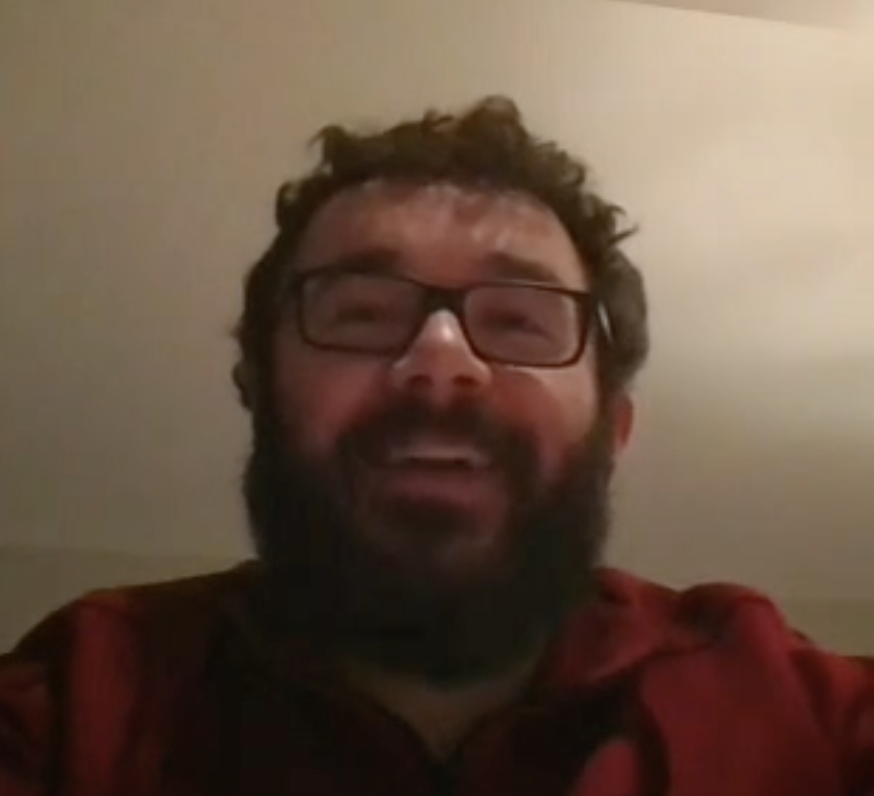- HOME
- BEST POKER TRAINING SITES
- POKER GUIDES
- ONLINE POKER ROOMS GUIDE
- POKER NOTES LIVE APP
- MORE
In this episode of The Bernard Lee Poker Show on the Cardplayer Lifestyle Podcast Family, Bernard Lee interviews Poker Hall of Famer and six-time WSOP bracelet winner, Daniel Negreanu. Daniel discusses what he has been doing during the COVID-19 lockdown and shares his thoughts about the postponement of the 2020 World Series of Poker. Daniel also discusses his new role as GG Poker Ambassador and the GG WSOP Super Circuit Poker Online Series, with 595(!) events including 18 WSOP Circuit ring events and a $100 million guaranteed prize pool.
Also, in the news, Bernard speaks with James “SplitSuit” Sweeney, co-founder of Red Chip Poker, about the launch of CORE 2.0. Visit Red Chip Poker and use the code: Core2020 to claim one FREE week! Plus, follow Bernard on Twitter to be eligible to win a free month-long subscription to Red Chip Poker’s Core program.
| 0:00 | Red Chip Poker Ad |
| 0:49 | Welcome to The Bernard Lee Poker Show as this week’s guest will be Poker Hall of Famer and GG Poker Ambassador, Daniel Negreanu. |
| 1:00 | From May 3-31, 2020, GG Poker is holding the GG WSOP Super Circuit Poker Online Series with 595 events including 18 WSOP Circuit ring events and a $100 million guaranteed prize pool. |
| 3:30 | The Bernard Lee Poker Show is celebrating its 13th anniversary with special guests Daniel Negreanu (this week), Jack Binion, Lynn Gilmartin and Bertrand ‘ElkY’ Grospelier. |
| 4:58 | Red Chip Poker co-founder James “SplitSuit” Sweeney joins the show to announce launch of CORE 2.0, which will include hundreds of training videos, on May 14, 2020. |
| 9:15 | The Bernard Lee Poker Show will give away two separate free month-long subscriptions of CORE. Make sure you follow Bernard on Twitter to be eligible. |
| 11:34 | RunGood Gear Ad |
| 12:17 | Bernard welcomes Poker Hall of Famer and GG Poker Ambassador, Daniel Negreanu. |
| 13:03 | Daniel discusses how he is spending his time during the COVID-19 lockdown, including playing poker online. |
| 14:27 | Daniel gives his thoughts of the postponement of the 2020 World Series of Popker. |
| 16:39 | Daniel talks about how he thinks the world of poker will look after this COVID-19 pandemic. |
| 21:17 | Daniel discusses how the city of Las Vegas is affected during this COVID-19 pandemic since it relies so heavily on tourism. |
| 24:55 | Daniel talks about playing WSOP this year online and the feasibility. |
| 27:04 | Daniel doesn’t believe that online poker will return to U.S. anytime soon, even with the resurgence of online poker during the COVID-19 pandemic. |
| 30:07 | Daniel discusses playing golf and social distancing. |
| 32:58 | ShareMyPair Ad |
| 33:31 | Bernard continues his interview with Poker Hall of Famer and GG Poker Ambassador, Daniel Negreanu. |
| 34:01 | Daniel discusses his new role as GG Poker Ambassador. |
| 37:11 | Daniel describes the GG WSOP Super Circuit Poker Online Series with 595 events including 18 WSOP Circuit ring events and a $100 million guaranteed prize pool. |
| 40:26 | Daniel talks about other GG poker ambassadors including Bertrand ‘ElkY’ Grospelier and tennis Hall of Famer Boris Becker. |
| 41:44 | Daniel explains the first WSOP circuit event on GG Poker, where $111 from each entry will be donated to the Nevada COVID-19 Task Force. |
| 42:55 | Daniel talks about some intriguing aspects of GG Poker including Spin and Gold, All-In and Fold Tournaments, and the Player Staking Platform. |
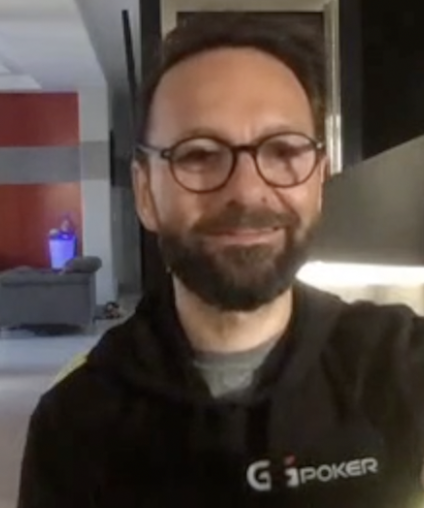
Jennifer Shahade is a two-time U.S. Women’s Chess Champion, speaker, host, author and PokerStars Ambassador. The Program Director at US Chess Women, Jennifer is passionate about female empowerment and creative work around the games she loves most, chess and poker. She is the author of Chess Bitch and Play Like a Girl, books that, along with her work for US Chess Women, aims to bring more females into the game.
Jennifer believes that thinking inside The GRID, the title of her poker podcast, is a way to organize our thinking in a hectic world, as well as a portal into deep and beautiful thought. The grid is both a reference to the 8×8 chess board, and the 13×13 color coded grid of all possible poker hands, which poker professionals now use to study the game. Jennifer is also an author and host at the Grand Chess Tour and of the award winning podcast, Ladies Knight. In 2020, The GRID won the Global Poker Award for the best poker podcast in the World.
Make sure to check out rec.poker/resources for all the partnerships and bonus RecPoker is offering. Specifically, Red Chip Poker is offering RecPoker listeners a free week of CORE by visiting Rechippoker.com and using the code “RECPOKER.”
| 0:00 | Welcome & Introduction |
| 0:40 | RecPoker “Top Two” |
| 0:58 | Jen Shahade: Welcome & Catch-up |
| 3:10 | Jen Shahade: “Final Acquiescence to the Twitch Culture” – Streaming on Twitch |
| 8:50 | Jen Shahade: Responds to John Somsky’s insight about facing things out of our control |
| 11:00 | Jen Shahade: Responds to Steve’s question the meaning of The Grid |
| 13:43 | Jen Shahade: Discussion of Jim’s AK hand with the panel |
| 41:19 | Jen Shahade: Chris’s question about hardest hand for “the Grid” |
| 45:50 | Jen Shahade : How can we connect |
| 46:48 | Jen Shahade : Ladies Night podcast |
| 48:50 | Panel discussion post-Jen |
| 50:50 | Home Game Updates (including Social Distancing Series) |
| 57:03 | RecPoker Membership Content Updates |
| 59:12 | Closing Comments |

Earning value from your best hands and making players fold with big bluffs are important aspects of profitable poker.
But the old adage of “a penny saved is a penny earned” is also essential.
How long can your $2,000 bankroll survive winning lots of $20 pots, but losing many $40 pots? Yeah, not long at all.
Perennial losing players aren’t able to “find the fold” when they know they’re beat. They keep paying off their opponent’s small and big bets because they just don’t want to believe their top pair hand is beat, or that their flopped set is beat by a flush on the four-spade board. Winners, though, they read the situation and take in all available information. When they realize they’re not likely to win this one through showdown or bluffing, they quickly make the necessary fold. It doesn’t matter the strength or the beauty of their hole cards (I’m looking at you, pocket Aces).
So, how can you start folding more to avoid giving value and simultaneously grow your bottom line? Here are four skills I recommend you work on.

Hand reading is the most important skill in all of poker.
Hand reading is the process of assigning your opponent a range of hands based on how they entered the pot, then you narrow that range through the streets based on their actions and the board cards. As you narrow a player’s range, you get a sense of how strong or weak they are and you can make exploitative plays based on your read.
This skill requires a lot of time off-the-felt to develop, but it’s absolutely worth it. As you become a better hand reader, you’ll improve your intuition for the strength of your opponent’s range of hands. This improved intuition will result in better folding and calling decisions, which have a direct and positive effect on your bottom line.
If you’d like to see how to do hand reading exercises off-the-felt, check out my 66 Days of Hand Reading Videos on YouTube.
If your opponent has a tendency to check-call or check behind with weak pairs and all draws, what does it mean when he comes out firing on the flop or raises your continuation bet? Yep, he likes his hand and wants value from you. If a different player only fires the turn double-barrel when his draw completes, and the third spade or fourth straight card just hit, go ahead and believe his bet. Don’t stick around hoping that this is the time he’s making an uncharacteristic bluff against your one pair hand.
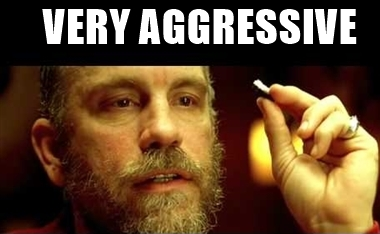
Have you ever hit top pair with AJ on the A92 board, called 3 streets then were surprised when your opponent turned over AK on the final A923K board? “How did he have that?!” you exclaim. Then you remember he 3-bet pre-flop and you called. Of course AK is in his range. But you, when you hit that top pair decent kicker on the flop, didn’t even consider this. You didn’t realize there are few 3-betting hands that are willing to bet three streets on an Ace high board. And guess what? Your AJ is ahead of none of them.
If you had remembered on the turn or river how the pre-flop action went down, you may have found the necessary fold and saved yourself a lot of money.
Many players aren’t great at hiding the strength of their hand. When they hit their set, they bet full pot because they want your chips. When they whiff and want you to fold, they don’t go for the same full pot-sized bet.
They size their bets down in an effort to save chips in case their bluff doesn’t work or maybe they’re just scared.

It’s up to you to pay attention to the size of the pot and calculate the size of your opponent’s bet in relation to it. Generally speaking, the smaller the bet the weaker the hand. A half pot bet is a common bluffing amount nowadays. As bet sizes get larger, from two-third to three-quarters pot and beyond, it’s a bit more likely they hold a strong hand.
Make sure you’re paying attention to showdown hands and replay the street-by-street action in your head. Take player notes when you see bet sizing tells so you can exploit these in the future.
Good luck putting these four skills into play to find more folds and grow your bankroll.
For more great coaching, strategies and tips from Sky Matsuhashi, check out his poker training site, The Poker Forge. Here’s our review.
Pot Limit Omaha (PLO) is a complex poker game that’s second in overall popularity only to No Limit Texas Hold’em. With Hold’em becoming more and more “solved” and the number of weak players across the board declining, many are looking towards PLO as the next big thing.
Omaha is an exciting game that offers much more action, and players aren’t as well-versed in PLO strategies as of yet. This opens up a world of new possibilities for those looking to keep making money playing poker.
At the same time, the game attracts many casual players looking to have some fun as many NLHE games lack action and are just not enough to keep their interest.
Whatever your reasons might be for considering Pot Limit Omaha, these three quick tips should help you make a smoother transition as a PLO beginner and protect you from making some costly mistakes during your initial attempts to crack the game.

You may think that this goes without saying as the same principle applies to Hold’em. However, PLO poker games can make you feel like almost all hands are good enough to play as they all can flop big. The reality is, you should be much more careful about choosing which hands to get involved with before the flop.
Many PLO starting hands that may appear quite playable are, in fact, borderline or straight-up trash! You should stick to only strong hands when you’re just starting out. Otherwise, you’ll end up in many tough spots after the flop, and this will cost you a lot of money in the long run.
Generally speaking, the best starting hands in Omaha are the ones that can make the nuts, have all four cards working together (connected), and also have the potential to make flushes (suited).
Big pocket pairs like Aces and Kings with additional cards that can help you make straights and flushes are thus your best bet. Middle connectors and small pairs aren’t nearly as good as they will often make second-best hands, such as smaller straights, lower sets, etc. So if you’re a Pot Limit Omaha beginner you need to adhere to strict guidelines for your starting hand selection.
In poker, it is impossible to only play in position. You’ll have to play some PLO hands out of position when defending a big blind or when you’re dealt premium starting holdings under the gun.
Even so, you should do as much as you can to play more hands in position and expand your starting range on the button in PLO games.
Due to the nature of the game, in Omaha, being in position and having control over the betting can be even more important than holding good cards! You’ll have a much harder time realizing your equity out of position, and you’ll also lose more when you’re uncertain about the strength of your hand.
Always think about your relative position when deciding whether to play a particular hand or not. If you have a hand that you think is borderline, let position be the determining factor. If you want to expand your starting hand range, starting with your selection on the button is probably the best option.
One of the biggest mistakes inexperienced PLO players make is paying draw to hands that don’t constitute the nuts. You don’t want to be calling big bets or pushing the action while trying to make a hand that is likely to be the second-best even if you do hit your best card out of the deck.
When it comes to drawing, try to stick to only the strongest of hands. Of course, it’s still fine to try and make a hand that’s not the absolute nuts if you can get there cheaply. But don’t get heavily involved in pots where your best option is to make a hand that can easily be behind. This once again draws importance to how selective you need to be with what PLO hands to play in the first place.
This scenario is most common with flushes. Players will draw to a King- or Queen-high flush, and when they finally make their hand, they’ll commit their entire stack, only to see another player was actually drawing to the nut flush.
It happens much more often than you think, especially if you are transitioning from NLHE, as flush-over-flush scenarios aren’t nearly as common in that game. So, in a nutshell, be careful!
The aforementioned three tips won’t make you an expert Pot Limit Omaha player, but they give you some solid fundamentals to get you started in the game at whatever casino you play poker at. As you play more, gather more experience, and learn other strategies, you’ll improve. Just don’t give up, and don’t let mistakes you make along the way frustrate you too much. There’s a LOT more variance in PLO than NLHE, after all. Just look at any missteps you might make as a part of the learning process and keep on grinding!
Online poker revolutionized the industry and brought the game to hundreds of thousands of people around the world. It changed the way people think about Texas Hold’em, and led to deeper analysis and reflection about the best ways to play the game. Despite going through numerous developments and upgrades over the last two decades, there are still a lot of differences between online and live poker. Could the use of live streaming or virtual reality be the next step in merging online and live poker?
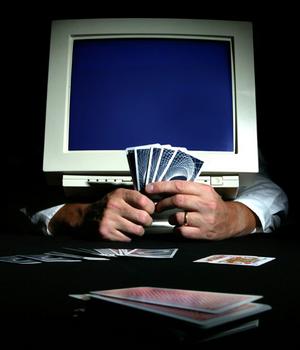
Online poker is an incredibly popular variant of poker because it is so easily accessible. Players simply log on to an online poker site and can find a game in seconds. Live poker, on the other hand, can only be played at scheduled times when specific events are taking place. There is more info at Legalbetting on the pros and cons of online poker, but the main point made there is that the advantages of online poker are numerous. It’s convenient, less stressful, and suitable for any budget. The one main downside mentioned by the site is that it’s less social because players can’t see their opponents.
This is only a minor hindrance to the game, though, and it is something which could be easily rectified in the future. As technology advances, the online poker industry is putting it to good use in whatever way it can, as discussed throughout our analytical tools and guides. Multiplayer live streaming games of poker or even virtual reality poker could be the next step in the progression.
Live streaming has emerged as one of the most popular new pieces of technology over the last three years. The platform has been used in the gaming industry for some time, ever since the inception of Twitch.tv in 2011. But it only became mainstream and started enjoying mass use when Facebook introduced its own live streaming offering in January 2017. Within a year there had been more than 2 billion live video viewers, and it was found by 99 Firms that one in five videos in 2017 was a live broadcast.
Live streaming brings the action to viewers and players in their homes, and the technology has permeated through every industry. Online casinos have found it to be extremely popular and use it for anything from blackjack to baccarat. Players see the dealer shuffle and deal the cards in real time, and when they receive their hand it appears on their screen.
The fact that blackjack works in this manner suggests that the same could be done with poker. A live dealer could deal a hand to virtual positions on the table. These cards would then be represented on each player’s screen at home. They could then play out their hands as they would do in an online game, but could also have the opportunity to chat to players.
Live streaming could easily pave the way for the final step in the evolution of online poker, which would be virtual or augmented reality. This technology is expected to start going mainstream in 2023 with a projected revenue of $14.8 billion that year. If developers are able to combine live streaming with AR or VR, they could essentially create a hybrid between an online and live poker experience. In this scenario, players would be able to see one another, but would actually be in completely different physical locations. PokerStars VR has done precisely this, but it hasn’t yet crossed into mainstream levels of popularity.
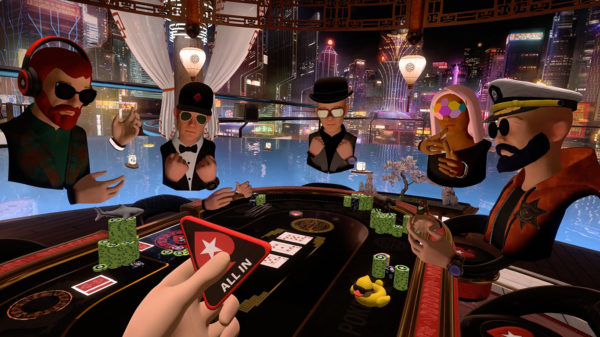
Live poker streams could easily work, and they may become ubiquitous over the next few years. From there, the natural progression could be to combine the streams with AR and VR to create a perfect mix between online and live poker.
Jonathan Little has been at the forefront of No Limit Hold ‘Em coaching for years now, from his many books, to a multitude of online resources. His online coaching website, PokerCoaching.com, has seen incredible growth since it was borne out of his former site, FloattheTurn.com.
As PokerCoaching.com’s impressive roster of coaches has now grown to a team of 10 incredibly talented and diverse poker players, we celebrate this milestone with a deep dive into the impressive roster, and take a closer look at what each poker coach brings to the table.

The three main elements of PokerCoaching.com training are Courses (series of multiple videos covering a topic), Classes (standalone videos or webinars covering a topic), and Quizzes (hand breakdown videos with multiple-choice questions attached to key elements of the hand, with answers broken down by coaches). There are also monthly Homework Challenges and other webinars done exclusively by Little, but we’ll discuss those specifically in his section.
Cue Sirius / Eye in the Sky by The Alan Parsons Project… and in my best Ray Clay voice…. AAAAAAAAAAND NOW! THE STARTING LINEUP FOR YOUR MULTI-TIME CHAMPION…. POKERCOACHING.COM COACHES!!!!


Since PokerCoaching.com was founded by Little, it’s no surprise that so much of the content comes from him.
The huge amount of coaching he alone provides would be worth the subscription price, and that’s without even mentioning the monthly Homework Challenge webinars and the multitude of situational charts on the site.
I’d be remiss if I didn’t also mention the regular content he provides for free via YouTube and his social media channels (shout out to Mr. James and Mr. Thomas!).
Little’s contribution to teaching poker to the world is undeniable. But his ability to grow his roster of coaches to expand on his teachings and provide their own unique perspectives is a key reason why PokerCoaching.com has become such an outstanding resource for those looking to expand their knowledge of No Limit Hold ‘Em.
So let’s look at the rest of that roster…


As Lead Coach at PokerCoaching.com, Affleck’s volume of content is second only to Little’s, and he can be counted on to provide at least one class or quiz per week, sometimes more. Like Little, the amount and variety of coaching he provides is really appealing, especially if you’re an online player. Recently, Affleck even did a near 90-minute hand review webinar of a member’s $5 online tourney! Hand reviews from a wide range of buy-ins form most of Affleck’s classes, but there are plenty of other classes on good decision making, situational strategies, and technical play as well.
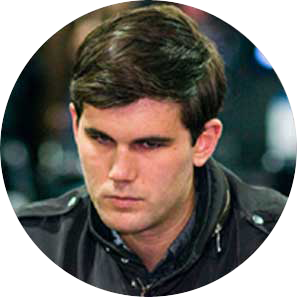

Alex “Assassinato” Fitzgerald’s content on PokerCoaching.com may be the best value available for standard and trial members because almost all of his content is available for the lower tiers of membership! Fitzgerald is a veteran tournament coach with a long resume of success, especially online. I’ve said this in previous articles I’ve mentioned him in, but at first I found his delivery a little, shall we say, smug? But as his name suggests, He’s a freakin’ Tournament Assassin! If I were as good as Fitzgerald, and knew as much about poker as he does, yeah, I’d be sounding pretty damn confident, too!
As I’ve watched more and more of his content (and read his outstanding books), I’ve become a huge fan. Fitzgerald’s knowledge is evident in every piece of content on PokerCoaching.com, and I continually look forward to learning from the brilliant and creative ways he’s laid waste to whatever new opponent he’s faced.
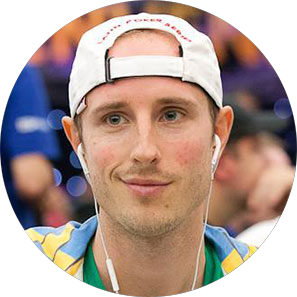

First, a quick aside… I just want to say it baffles my mind that I’ve never once crossed paths with Evan Jarvis, as he lives in Toronto and plays in the same casinos regularly that I do. Heck, he even goes to the same Float Spa that I do! Forget figuring out high-level GTO play, THIS is the aspect of poker that blows my mind!
Anyway, “Gripsed” is probably my personal favourite coach on the PokerCaching.com roster, and yes, it is primarily because of the reasons mentioned above. However, his teachings are extremely relatable to small-mid stakes players. $1/2, $1/3, and $2/$5 cash game quizzes are his primary contribution to the site, which are tremendously helpful for players at that stake. But his mindset work, which is featured in his ‘5 Pillars’ courses, is something I’m a big believer in as well. I really believe that a healthy lifestyle away from the tables, and having a healthy mindset and focus when it comes to your poker, is invaluable! Mindset coaching is a huge part of the game that’s really been developed in recent years, and I know it can help any player’s game.


Wade is another hugely successful player with experience in coaching. While his content here is primarily hand reviews (not a bad thing by any means, they are one of my favourite study methods, and Wade’s are very thorough), his other classes are solidly on point as well. His most recent class on triple barrel bluffing was something that piqued my interest, as I’ll fully admit to having a tendency to barrel off unsuccessfully in bad spots. This is now being worked on, thanks to Wade’s excellent teachings. Oh, and his PowerPoint game is as strong as his coaching!




Jaffe’s collection of classes cover a really interesting mix of topics. I was especially impressed with his videos on overbetting. It’s a topic I’ve really not seen much content on specifically. Sure, it gets mentioned here and there in hand history reviews, where spots come up for an overbet as an option, but to really get a solid deep dive into it was appreciated. His class on learning opponents through pre-flop play was also a favourite of mine. Getting reads on your opponents is crucial, and Jaffe provides a ton of things to look for early that will be useful for players of all skill levels.
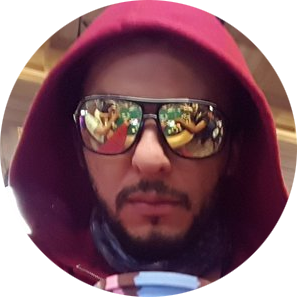

You want to learn GTO? Here’s your guy! As Little even says himself in Acevedo’s debut video with PokerCoaching.com, Acevedo is a GTO master (he’s literally written the book on it!). With his videos, you’ll be diving headfirst into the solvers, as Acevedo breaks down GTO play. Acevedo’s classes include several hand reviews, including a very cool series with Little, as Acevedo analyses Little’s play in a recent tournament against some of the online world’s very best.
Be warned though, this is some high-level stuff. If, however, you are ready to dive into GTO, or even just want to get a good glimpse at how solvers are used effectively, Acevedo’s teachings are the way to go.
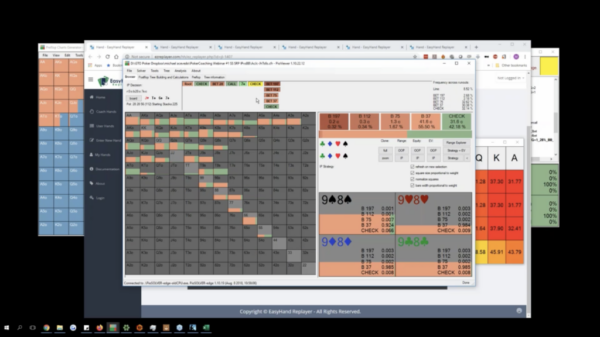

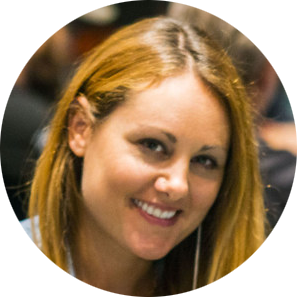

My feelings on Lexy Gavin’s coaching are extra warm and fuzzy; because I recently watched some of her videos immediately after watching Michael Acevedo teach GTO. They were a breath of fresh air, to say the least (high level GTO is haaaaard!).
To be fair, the content of their classes is of course worlds apart. Gavin’s classes are more focused on single, specific areas of No Limit Hold ‘Em, which is still tremendously valuable, and I’d certainly recommend her classes for players looking to build really strong fundamentals.
As a bonus to ‘Standard’ level PokerCoaching.com members, Gavin’s content is all available to you! Of note in her quizzes, a really interesting $25/50 NL hand she played against Cate Hall is included, which is a great example of not blasting off with an overpair, and recognizing range and nut advantages.
LISTEN: Interview with Lexy Gavin
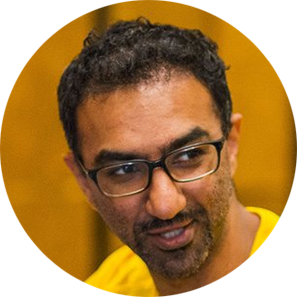

Jaka has been in the lab since coming back to poker last year after taking a couple of years off to work on a start-up company, and it shows, in a very good way. He still has the aggressive, exploitative mindset he’s known for, but he breaks out the PioSolver less than 15 min into his WCOOP review to deeply analyze a flop bet sizing that he didn’t like. Jaka is fiercely critical of his own play, and recognizes he’s still got work to put in in the lab.
It’s really interesting to see such a creative player break down how he played a hand in the moment, then dive right into self-analysis and watch him learn along with you. I’m really looking forward to seeing the continuing rebirth of “The Toilet”.


Romero is the latest addition to the PokerCoaching.com roster, having signed on at the beginning of April. He brings six years of online and three years of live experience to the table, with millions of dollars in earnings in each format.
Though he hasn’t created any content just yet, Romero has done a Q&A “getting to know you” session with Little on his background, and what we can expect from him. In it, Romero described himself as originally a GTO-based player, but he is now exploring more variations and adjustments. He says he played too much PioSolver-based GTO theory, and now believes a general understanding of poker theory is more important than finding exact solutions based on solvers.
Romero’s first sessions with PokerCoaching.com will be a 5-part series of webinars, which will be released monthly. These will include:
Please welcome the newest @PokerCoaching_ Coach, @skielanskis, to the team! I’m very excited for our students to have the opportunity to learn from one of the best players in the world. To start things off we’ll be hosting a live webinar today at 4pm EST:https://t.co/9xQiaVdsXA pic.twitter.com/dWEcW3B5ql
— Jonathan Little (@JonathanLittle) April 9, 2020
Before the year is done, this outstanding roster of coaches will have created 300+ new hand quizzes, 24 new video classes, 12 new live challenge webinars, 48+ new live coaching webinars, and much more!
That’s like the poker training equivalent of the ’97 Bulls putting up 200 on the Clippers! How could you not get on board with that?!
If you’re looking to boost your No Limit Hold ‘Em game, there really is no better group of coaches to get you to your goals than the team at PokerCoaching.com!
In this episode of The Bernard Lee Poker Show on the Cardplayer Lifestyle Podcast Family, Bernard Lee interviews WPT champion and WSOP bracelet winner, Tyler Patterson. Having placed fourth, Tyler describes the details of the WPT Bay 101 Shooting Star Main Event (March 11-13, 2020). Tyler also discusses growing up in Washington State, starting out as a dealer and the ban of online poker in Washington State. Tyler also describes how special it was to win a WSOP bracelet and WPT title.
Also, in the news, RunGood Poker President Tana Karn joins the show to announce the “Keep The Lights On” Initiative that is designed to help the freelance poker media corps. Click here if you’re interested in making a donation.
Be sure to follow Bernard on Twitter and subscribe to his YouTube page to be eligible to win an exclusive “Keep The Lights On” hoodie (RunGood Gear has produced only 50 of these limited-edition sweatshirts).
| 0:00 | RedChipPoker Ad |
| 0:49 | Welcome to The Bernard Lee Poker Show as this week’s guest will be WPT Champion and WSOP bracelet winner, Tyler Patterson. |
| 1:17 | Alexandros Kolonias captures the overall 2020 Poker Masters championship, which was held online on partypoker. |
| 2:57 | RunGood Poker President Tana Karn joins the show to announce “Keep The Lights Initiative” that is designed to help the freelance poker media corps. |
| 8:08 | RunGood Gear Ad |
| 8:51 | Bernard welcomes WPT Champion and WSOP bracelet winner, Tyler Patterson |
| 9:52 | Tyler joins The Bernard Lee Poker Show |
| 10:49 | Tyler discusses how he got started in poker, starting as a dealer in the Seattle area. |
| 13:06 | Tyler describes growing up playing live poker since Washington State had an online ban beginning in 2006. |
| 16:24 | Tyler recalls the couple of books (Theory of Poker by David Sklansky and Super System by Doyle Brunson) that he read early in his career. |
| 20:08 | Tyler discusses how he continued to improve his poker game over the past 15 years, as the game as continued to develop. |
| 23:57 | Tyler recalls how special it was to win his WSOP bracelet back in 2014 in the $1,500 PLO Hi-Lo 8 or better event. |
| 27:18 | Tyler talks about his desire to become a member of poker’s Triple Crown club (WSOP bracelet, WPT Main Event and EPT Main Event) |
| 31:12 | ShareMyPair Ad |
| 31:44 | Bernard continues his interview with WPT Champion and WSOP bracelet winner, Tyler Patterson. |
| 34:38 | Tyler discusses his role as National Ambassador for Thunder Valley Casino and playing the WPT Thunder Valley right before the Shooting Star Bay 101. |
| 38:34 | Tyler recalls travelling with previous show’s guests Matt Savage and Anthony Zinno from Thunder Valley to Bay 101. |
| 40:26 | During Day 1 of the 2020 Shooting Star Bay 101 Main Event, Tyler remembers the major events unfolding, including NCAA postponements and the NBA shutdown. |
| 43:25 | Tyler describes end of the Day 2 of the 2020 Shooting Star Bay 101 Main Event. |
| 45:14 | Tyler remembers Day 3 from his perspective and the eventual ICM chop due to COVID-19. |
| 54:25 | Tyler describes the empty streets of the Las Vegas Strip during the COVID-19 lockdown. |
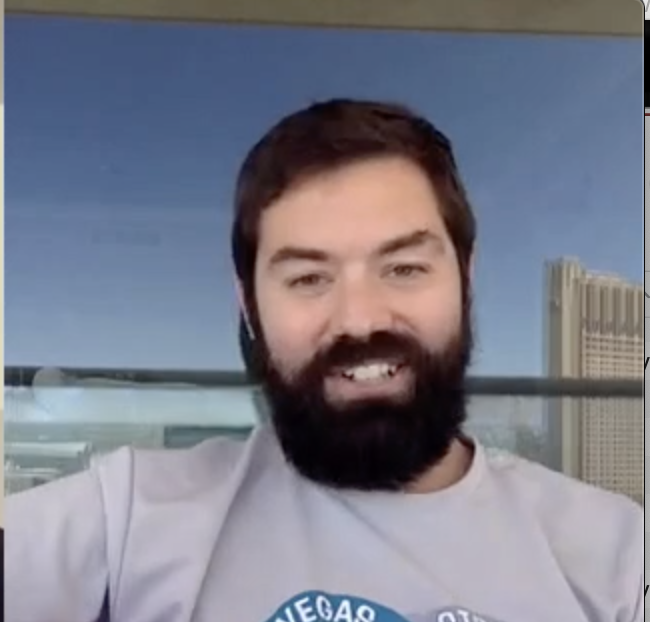

Earlier today, I interviewed Tana Karn, President of RunGood Gear and the RunGood Poker Series, about the “Keep The Lights On'” Initiative. During this COVID-19 pandemic, millions of people around the world have been affected, including individuals in world of poker. This fundraising drive is designed to help freelance poker media pay their utilities bills since they are out of work due to the cancellation and postponement of live poker tournaments, including the 2020 World Series of Poker.
Three organizations (PokerGO, Global Poker, and RunGood Gear) have teamed up with each naming a respective “Champion” as follows:
Each champion will play in a total of 30 online poker tournaments on Global Poker over three weeks (10 per week) and will raise funds through donation pledges. Fans and supporters can either make a one-time donation or, if they want to play along at home (and what poker player doesn’t want a “sweat”?), can make a recurring donation pledge for every tournament their Champion cashes in. For example, if you pledge $5 and your champion cashes 8 times (out of 30 events), you will end up donating a total of $40 that will be added to the Keep the Lights On fund.
In an added bonus incentive for donors, every person who donates $5 or more to the winning team, will receive a private ticket to play an online qualifier with three seats up for grabs for the ALL-STARS PRO-AM LIVE EVENT at the PokerGO Studios in December. To be eligible, you must make your pledge by May 3rd, 2020.
I pledged per “in the money” to Keep The Lights On: Team @RunGoodGear RunGood with @JamieKerstetter on PledgeIt! https://t.co/cGrwRncO0F #GoJamie #GoCrouton #TeamRunGood #KeepTheLightsOn https://t.co/gvJ2m6EvBE
— Bernard Lee (@BernardLeePoker) April 27, 2020
Over and above the competition at the virtual felt, the PokerGO shop and RunGood Gear have designed an exclusive hoodie (only 50 are available) with 100% of the proceeds will go to the fund.
Poker players and fans, please consider purchasing this @RunGoodGear hoodie for $50 as all proceeds will go to support freelance poker media members who’ve found themselves out of work during the pandemic.https://t.co/n6iiNCLL3a pic.twitter.com/CwtlQdWXe1
— Chad Holloway (@ChadAHolloway) April 27, 2020
Finally, if you FOLLOW me on Twitter and SUBSCRIBE to my YouTube channel, you will have a chance to WIN one of the Exclusive “KeepTheLightsOn” hoodies, which I’ll be giving away in the near future.
if you are interested to learn how the funds will be distributed or if a member of the poker media and interested in learning more about how to receive funds, visit this page.
I hope everyone stays safe and continues to practice social distancing during this unprecedented time.


Pretty much anyone who’s ever played Texas Hold’em knows that pocket aces are absolutely the best starting hand you can get. However, those new to the game are often not completely clear on how they should go about playing this hand in different situations.
In this article, I’ll share my top three tips for playing aces correctly before the flop. These should help get rid of some misconceptions about the hand and also offer some useful strategies to boost your profits with pocket aces.


What would you say if I told you that you could fold AA pre-flop; heck, that you even MUST fold the hand some situations!
You probably will not find any push fold chart or another resource that advocates folding AA pre-flop, but sometimes it is just the best option. Of course, that would only happen in a very rare situation.
It most likely could happen if you are playing a satellite tournament, where you might be right to fold aces in certain spots where winning additional chips doesn’t really offset the risk of busting out.
So, if you are already virtually guaranteed to win a satellite seat because you have a huge stack and there are plenty of short stacks left on the bubble when you suddenly face an all-in from chip leader, it could be wise to muck pocket aces. This is a spot I have personally been in, and I just happily folded and took my satellite prize without risking it for no reason.
It really was just ‘fold everything’ written in different ways across 220 pages though
— Barry Carter (@Barry_Carter) March 9, 2019
However, players new to Texas Hold’em often try and come up with their strategies, which occasionally involve folding aces, for the reasons that don’t really have any foundation in the math. Players tend to remember when they lose with AA, and this can sometimes skew their thinking, making them believe that aces “aren’t all that good.” Sometimes they’ll even tilt and consider moving to a completely different online casino poker site.
This is simply not true. Pocket aces are a massive favorite against ANY other hand. For example, against a random hand, you’ll be an 85% favorite. Your odds of winning vs. other premium hands that are likely to commit chips to the middle before the flop are around 81%.
So, there is basically no reason to ever fold pocket aces before the flop in a regular tournament or cash game setup, unless you are in an exceptional situation where winning more chips will not be valuable at all.
Pocket aces do have the best odds of winning against a single opponent. As the number of opponents involved in a hand increases, however, the odds of winning with aces decrease.
Even so, you should always be looking to get as many chips as possible into the pot before the flop with aces regardless of how many other players are showing interest in a hand.
This is especially true for multi-way all-ins. New players are often confused about these spots as they know that it’s much harder to win against multiple hands.
Indeed, you might not be the favorite against all players together when there are several players all-in ahead of you, but you’ll still have the biggest equity in the pot.
Although you’re going to lose more often in these hands than in heads-up scenarios, the pots you win will be much bigger, and more profitable in the long run.
Let’s take a quick example. Let’s say there are four players already all-in and you find AA in the BB, and correctly decide to move all-in as well.


The math proves the point: don’t be afraid!
If we assume that everyone bets $100 in the scenario above, you will win $500 pot almost 40% of the time. So while not be winning nearly as often as in heads-up pots (you WILL lose 60% of the time), you still end up earning more money than in a more favorable one-on-one scenario, so never shy away from committing your chips, even against multiple opponents.
While pocket aces are the best possible starting hand, you’re only guaranteed to be the favorite if you can get all the chips in the middle before the flop. Once the flop is out, things can change dramatically, especially if you’re up against more than one opponent.
Because the odds of being dealt pocket aces are pretty low (1 in 221), players are often afraid of not getting any action, so they make the mistake of slow-playing the hand way too often. While this can be fine in certain specific situations, it can make things much more complicated as well and lead to your aces being cracked more often than you’d like.
If you’re new to Hold’em, you should try to play the “rockets” fairly straightforward. It doesn’t mean you should announce it to the table by making an unusually big raise, but you should be raising much more often than calling.
For example, if you raise, two players call in between, and then someone 3-bets, don’t try to get too cute and flat call. That will likely invite one or both players behind you to get involved as well. At this point, you’ll be in a tough spot as you’ll have a hard time figuring out how good your hand is on many flops. You ought to four-bet comfortably.
Against a single player, you can flat call a 3-bet to trap them and under-represent your hand every now and again but try to avoid doing so in multi-way pots at least until you’re very confident in your post-flop abilities.
There are countless online poker sites out there. If you were to simply do a Google search for “online poker,” you’d get so many results that it would probably take you days to really go through them all. On the surface, this is a great thing, as more choice means you are much more likely to find exactly what you’re looking for.
However, with the online poker industry being such a big moneymaker, it attracts all sorts of people with all sorts of agendas. This means that not all poker rooms you’ll find online will have your best interests at heart. Some are just there to make as much money as possible in as little time as possible.
So, the question that comes naturally is: how do you know which online poker room to choose? While there are plenty of choices out there each catering to the tastes of even the most discerning online poker player, there are certain things you should look for an examine before you sign up and trust a poker room with your money. Going through our short five-point checklist should help a lot.


Source: Adobe Stock Images
One of the best indicators that a poker room is the real deal is its longevity and the general reputation it enjoys with the players. If a room has been around for a decade or more without any serious complaints or scandals, it’s more than likely it can be trusted.
Of course, it’s hard to find a poker site that hasn’t been through some kind of controversy if they’ve been around long enough. But checking out how they dealt with a crisis, how they communicated with the players, and what they did to handle the situation will tell you a lot.
There is a huge difference between playing on a quality online poker platform and trying to make things work on a low-budget one. Poker is difficult enough as it is as you are constantly under pressure to make right decisions. The last thing you need is to be distracted by software crashes, weird bugs, and disconnects in the middle of a hand.
The quality of the software also speaks heaps about how serious the company behind it is. Rushed-out and patched-up solutions scream “danger”. If the operator is OK with releasing a bugged, unstable, and visually unappealing platform this usually indicates they aren’t really thinking about sticking around for a long time, nor that they care much about players (rather only about deposits being made).
Those who like to gamble online will tell you that bonuses play a huge role in their decision where to play. Some of the best casino sites offer great bonuses and promotions for their players and places such as xfire.com make it their mission to list and review these casinos to make it easier for the players.
With that said, bonuses aren’t reserved just for casino players. Many poker rooms also offer nice welcome bonuses that can really help with building your bankroll. Beyond this, you’ll also find many of them offer solid rakeback deals, additional deposit bonuses, and other promotions to reward the time you spend at the tables. So, make sure to check out this all-important aspect as well before making up your mind about where to play poker online.
Even the best poker software and the most generous of bonuses won’t help if the site you choose to play on is a ghost town. Liquidity is key for an online poker room’s success. In other words, there have to be enough players online for games to run at enough hours during each 24-hour period. One of the best things about online poker is the freedom it provides to play whenever you feel like playing and organize your schedule around your other obligations. If you want a poker game at 4am, you need a poker room that’ll give you one!
This is only possible on those rooms that have good player numbers. There are sites out there that constantly track this information and help you figure out if the room you want to try is worth your time. Without enough players logging in to play every day, you just won’t be able to hit your goals.
This one may not be that important to you if you’re a cash game player but even cash players will benefit from a rich tournament schedule with a good number of appealing daily and weekly guarantees. A room with a solid MTT schedule will usually attract a fair number of players, at least during those hours when there are most events happening. Many of those players might choose to multi-table in cash games simultaneously.
Poker rooms that aren’t able to offer good guarantees usually struggle with the traffic in general. While you may be able to make money playing on one of these rooms still, it will usually be for a very specific game type or stake, severely limiting your options.
If you’ve read Modern Poker Theory by Michael Acevedo, chances are that you want more. At least that’s how I felt after reading the amazing book (see my Modern Poker Theory book review here).
Well, I have great news: The Modern Poker Theory two-part video series (The Essential Guide Pack and Advanced Pack) is now available from D&B Poker! The parts can each be purchased separately, or you can save 15% by purchasing the two-pack.
The book explains what GTO is, why you should be using it, and what lines are most optimal in every possible scenario. The video series shows how to use the many different GTO solvers so you can begin to visualize optimal lines for yourself. In the videos, Acevedo talks about deliberate practice, which is a special type of practice that is purposeful and systematic. While regular practice might include mindless repetition, deliberate practice requires focused attention and is conducted with the specific goal of improving performance. Acevedo mentions a D&B book called Purposeful Practice For Poker by Dr. Tricia Cardner and Gareth James that goes hand and hand with his Modern Poker Theory book and video series. As the old saying goes, practice makes permanent!
Before watching the video, I had thought that GTO solvers are for pros and geniuses, but after watching the video, I feel like they’re useful even if you’re at an earlier stage of poker prowess.
Acevedo instructs you how to use a number of different GTO solvers; PioSOLVER, MonkerSolver, GTO+, HoldemResource Calculator, and Simple GTO Trainer. He demonstrates how to install the software, discusses the cost and shares which ones, in his opinion, provide the best value. He went above and beyond what I was expecting, even delving into other poker-related software that you can use in unison with the GTO solvers such as Equilab and Flopzilla equity calculators (in many instances, you’ll want to utilize multiple poker software programs simultaneously).
Moreover, Acevedo illustrates how GTO solvers are better than CardRunnersEV as far as tree simplicity, explaining that CardRunnersEV decision trees can get out of hand when you start to include too many options; in the real world, there are a lot of variables.
This more basic part of the Modern Poker Theory video series includes four videos that discuss:
These videos cover everything from understanding poker hands and ranges at a fundamental level to understanding how GTO solvers work, why solvers strategies are important, and how to correctly apply them in-game to learning the basics about PioSOLVER functionality. The final video in this pack has real hands played by Acevedo reviewed using Pio. He explains how to set up each hand from scratch and then how to perform in-depth GTO analysis.
BUY NOW: Purchase the Essential Guide Pack separately for $39
This higher-level segment of the Modern Poker Theory video series discusses GTO Solvers in part 1 (4 Videos), which covers the importance of GTO Solvers and the differences between the various options available. It includes a MonkerSolver Tutorial, GTO+ Tutorial, and PioSolver Advanced Tutorial. In part 2 (3 videos), Acevedo reviews the hand history from a deep run in a $1k PokerStars WCOOP event using PioSolver and other tools. In part 3 (4 videos), we are shown the usefulness of post-flop aggregated analysis and how we can play against the solution using Simple GTO Trainer in regular mode and drills.
BUY NOW: Purchase the Advanced Pack separately for $79.
Some of my favorite parts of the video series were about the aggregated reports. Post-flop aggregated analysis can be instrumental when you sort the data. Cross-referencing the averages at the bottom of the post-flop aggregated data against someone’s HUD can show where other players have frequency issues that can be exploited. We can see why some boards are better to overbet and why it’s best to check back on others. There are some hands that shouldn’t be overbet on a board that likes to be overbet. A pair of aces doesn’t want to be overbet on an overbet board, for instance, because it blocks the opponent’s AX continuing range. On the other hand, we want to bluff-overbet hands that block their continuing range. Some drawing hands benefit from overbets as well because they can’t win on there own and have equity when called. Side note: we also want to overbet some airballs, too.
I learned so much more, too. Just a sampling:
Another favorite GTO solver feature that Acevedo teaches us is how to play against the solution. This option is available using GTO+ and Simple GTO Trainer. Basically, you play against the GTO solver! You get a random hand on a random flop and play against the solver, trying to pick the optimal line. It tells you if you chose correct or incorrect at every decision point.
I can’t think of a better way to practice deliberately. How often do you study hand histories using equity calculators and are still not sure of what the most optimal line is? That is a constant thought in the back of my mind when doing hand analysis. Sure, I calculate pot odds for calling and do break-even formulas for betting, but I am never quite certain if the line is optimal. Well, no more wondering!
All of the aforementioned is just a tiny fraction of what I learned from these amazing videos, my game will never be the same!
SAVE 15%: Buy BOTH Modern Poker Theory Video Packs
The ESSENTIAL GUIDE PACK bonus materials include Modern Poker Theory Pio Charts: NLH Cash and MTT Preflop Charts.
The ADVANCED PACK bonus materials are:
I would get this entire video series for the aggregated reports alone, not to mention every file with every range Michael used in his MPT book!
Michael Acevedo is a mythical figure to me now. Before reading his book, I remember thinking to myself that nobody could really find anything more to teach on the subject of poker. It has all been done before. Then, BAM, he does it!
Then, before watching the videos, I remember wondering how the video series could possibly really teach me anything else, as his book Modern Poker Theory literally covered it all. Then, BAM, he goes and does it again!
Michael is an enigma, a real honest to goodness legend!
I am blown away by his video package. With it, I can get a GTO solver that fits my budget, I can program it, and I can study like the pros! After a short time doing some deliberate practice using what I have learned from the Modern Poker Theory video packs, I’m confident that with continued study I will eventually reach the level the pros are at!
In this episode of The Bernard Lee Poker Show on the Cardplayer Lifestyle Podcast Family, Bernard Lee interviews three-time WPT champion and two-time WSOP bracelet winner, Anthony Zinno. Having placed 8th, Anthony describes the details of the Bay 101 Shooting Star Main Event (March 11-13, 2020). Also, Anthony discussed growing up in New England and how he started playing poker live at Foxwoods and Borgata and online during college and law school. Additionally, Anthony talks about the Poker Masters which was moved to online due to the COVID-19 pandemic and the fact that he is not playing this year since partypoker is not available in the U.S.
| 0:00 | RedChipPoker Ad |
| 0:49 | Welcome to The Bernard Lee Poker Show as this week’s guest will be three-time WPT champion & two-time WSOP bracelet winner, Anthony Zinno. |
| 1:05 | 2020 WSOP has been postponed, as Caesars targets a fall date for the year’s most anticipated poker tournament series. |
| 2:07 | Poker Masters is underway and will conclude at the end of the month. |
| 4:22 | RunGood Gear Ad |
| 5:05 | Bernard welcomes three-time WPT champion & two-time WSOP bracelet winner, Anthony Zinno |
| 5:53 | Anthony joins The Bernard Lee Poker Show. |
| 6:07 | Anthony discusses how he got started in poker, playing poker as he grew up in New England area, playing live at Foxwoods and Borgata and also played online in college and law school. |
| 11:11 | Anthony describes starting with no-limit hold’em and also played PLO. He didn’t start playing other mixed games until 2012. |
| 13:27 | Anthony recalls his incredibly successful 2015 year in poker when he won two WPT titles, WPT Player of the Year and his WSOP bracelet. |
| 18:12 | Anthony discusses playing a high variance style during tournaments. |
| 20:00 | Anthony discusses the difference between his two WSOP bracelets. |
| 24:19 | Anthony talks about Poker Masters moved to an online series due to COVID-19 pandemic. |
| 32:37 | ShareMyPair Ad |
| 33:10 | Bernard continues his interview with three-time WPT champion & two-time WSOP bracelet winner, Anthony Zinno. |
| 35:42 | Anthony recalls events leading up to the 2020 Shooting Star Bay 101 Main Event and the possibility of not attending. |
| 40:18 | During Day 1 of the 2020 Shooting Star Bay 101 Main Event, Anthony remembers the events including staff sanitizing the tables, a player getting a refund for his buy-in and the NBA shutdown. |
| 45:45 | Anthony describes Day 2 of the 2020 Shooting Star Bay 101 Main Event. |
| 48:01 | Anthony remembers Day 3 from his perspective and the eventual ICM chop due to COVID-19. |
